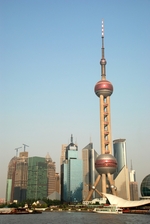|
|
Tuesday, 23rd December 2025 |
| Market wobbles cause turbulence in investment sector but Asian opportunities exist |
Back |
| The investment environment has been one of the most turbulent sectors in the light of the credit and liquidity crisis. Jennifer Richards notes the steady decline of the dollar, to trading at $1.44 against the euro on October 31st. She goes on to point out the benefits of investing in two of the world’s emerging powers, India and China. |
This year has been anything but dull. Markets have been turbulent, selling off, bouncing back, creating opportunities for canny investors and hurting others during the roller-coaster ride.
Sub-prime lenders ran in to trouble, hurting banking stocks globally and squeezing borrowing rates higher. As interest rates rose in the US, loan delinquencies increased and property prices softened, compounding the problem. Investment managers who owned sub-prime paper witnessed its rapid devaluation and liquidity deterioration.
 | | Shanghai skyline |
Domestically, banks sold off on the back of global sentiment and a slowdown in the construction sector. The credit squeeze continues with money market rates trading at uncharacteristically high margins above base rates. We even witnessed our first 21st century run on a bank in the reluctant form of Northern Rock, which had to be bailed out by the Bank of England in September.
In the credit squeeze that hit markets following the sub-prime crisis in the US, banking profits, investment funds and global sentiment were hit badly.
Irish equities underperformed the MSCI World Index in 2007, having outperformed for the previous five years. Despite this summer turbulence, investors in balanced funds are still in positive territory.
The dollar has had a rough year too, hitting new, all-time lows. At the beginning of 2007, the dollar was trading at $1.31 against the euro. Some analysts forecasted a breach of the €/$1.40 level which duly happened in September and it has subsequently traded as low as €/$1.44. Now some commentators are even forecasting that it might reach a new all-time low against the euro of $1.50.
Investment trends in 2007
Property continued to be a big attraction for retail clients. The diversification out of Ireland and in to European and UK property continued apace as did investment to increasingly distant locations.
In response to investor appetite for quality property opportunities abroad, Standard Life launched its first Global Real Estate Investment Trust (REIT) Fund which invests in top Asian, European and US REITs and other listed property.
A Real Estate Investment Trust (REIT) trades openly on the stock market. It owns and manages predominantly income-producing commercial or residential property. Most of its taxable income is distributed to shareholders via dividends. About three-quarters of Standard Life’s Global REIT fund is invested in commercial property.
Up until the launch of this fund, only the wealthy were able to buy in these locations. These property markets were made financially accessible to retail investors who could access high quality, global commercial property without the hassle of buying the property themselves with a minimum investment amount of €10,000.
Standard Life Investments has recently beefed-up its local presence in Hong Kong. It’s important to have this local knowledge because we believe Asia offers fantastic opportunities, particularly in Japan, Hong Kong and Singapore.
European investors had increased appetite for money market funds as safer homes for their money. This was understandable given the choppy markets that existed from July onwards.
In November Standard Life launched:
• A China fund
• An India fund
• A European Smaller Companies fund
• A European Equity Ethical fund
For diversification purposes, investors increasingly want exposure to more exotic asset classes which offer higher growth potential than the more established, mature markets.
Standard Life Ireland will then offer probably the most comprehensive choice on whatever aspect of European equities investors wish to have exposure to.
India and China are no longer viewed as ‘emerging’ but are more accurately described as developing markets. They are well advanced in their quest to become as established as Western mature markets. For example, both countries are expected to surpass the GDP of the US in 30 to 40 years time. India’s GDP is expected to overtake the UK by 2019. That’s just over a decade away.
China and India remind me of Ireland in some ways. India is the largest democracy in the world with a population of 1.05 billion half of whom are under 25 years of age. Interestingly in just over five year’s time, 55 per cent of the population will be wage-earning. Attitudes in India are changing. Unlike their savings-oriented parents, young people are keen to spend and borrow more.
Like Ireland in the 1980s there is a lot of infrastructural investment planned. For example, 75 per cent of the roads need tarmacadam. When this occurs the knock-on growth implications for GDP are pretty interesting.
China is another superpower which is increasingly expected to surpass the US in less than three decades. It has the largest population in the world and is expected to overtake the US as the largest economy in the world in 2035. McKinsey consultants predict that a massive middle class will emerge in China fuelling domestic demand.
It’s no longer a question of should investors have exposure to India and China but can they afford not to? These countries stock markets will become the new global benchmarks in a few short years. China and India are the new US. |
Jennifer Richards is an investment director at Standard Life.
|
| Article appeared in the November 2007 issue.
|
|
|